I recalled the steep unpaved mountain road rising toward my destination as both exciting and scary. Hairpin, blind turns; steep drop-offs with no guard rails; steady climbing to the top. With no mishaps or close calls, I arrived at the Cataloochee Divide, and the entrance road into Great Smoky Mountains National Park. That road had its share of driving thrills, twisting down to the Cataloochee Valley.
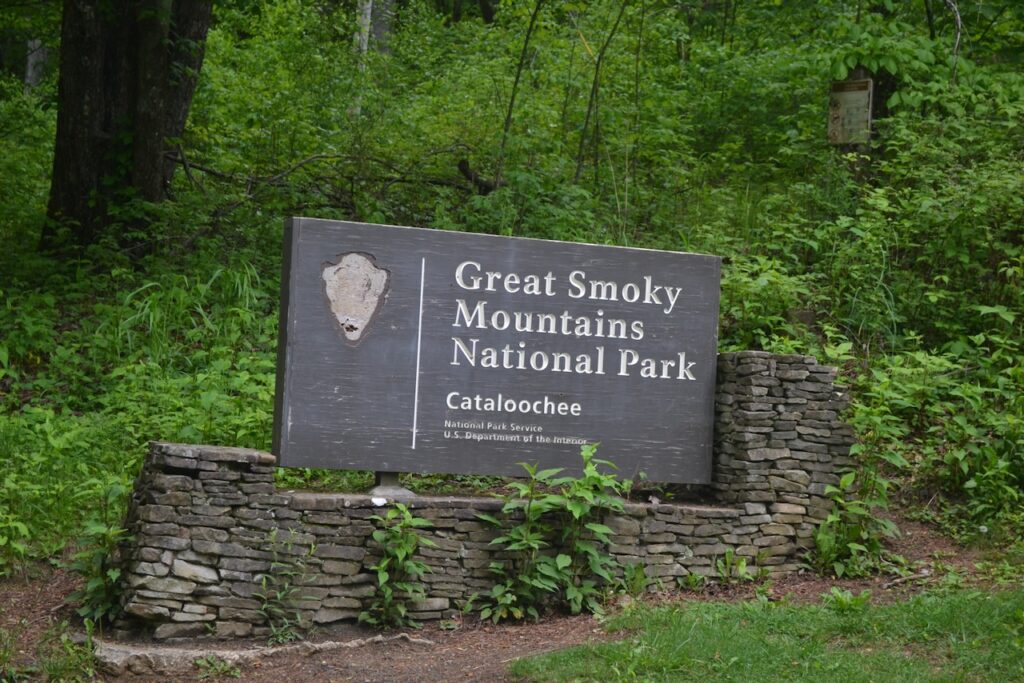
I arrived at the campground before my hiking and camping partners, close friends Jim Smolen and Mike Phillips. Drops of rain spurred my efforts to erect my tent, and I was greeted by a black swallowtail butterfly on my tent pad. The swallowtail brought up memories of my first trip to Cataloochee with my one-and-a-half year old grandson Sully (now twelve), and a butterfly phenomenon in the Valley – a “puddling” of a group of black swallowtails.
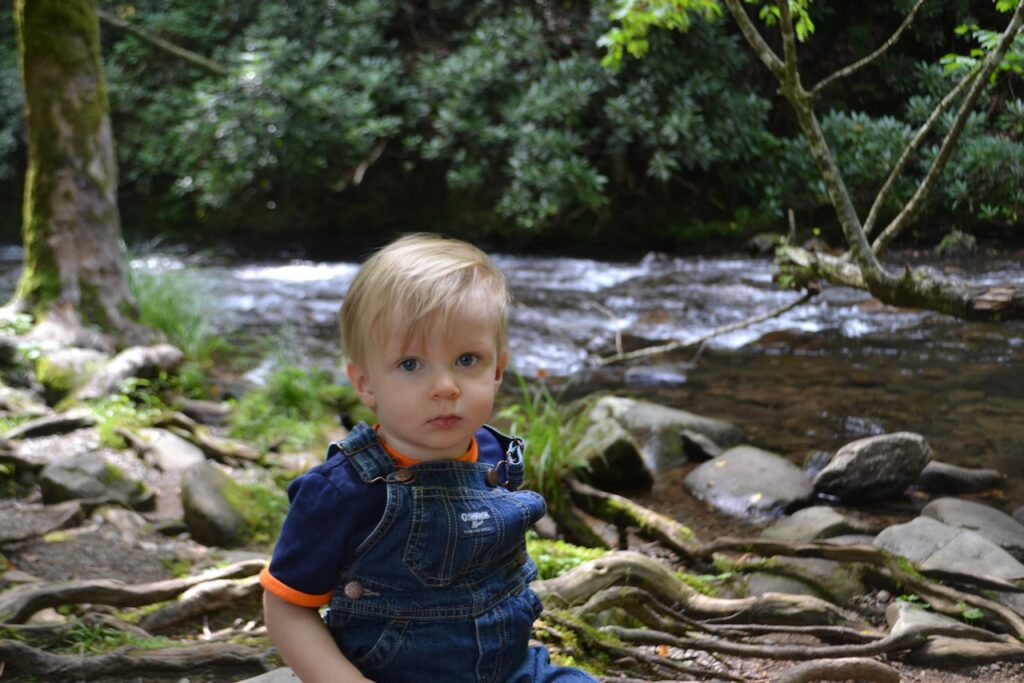
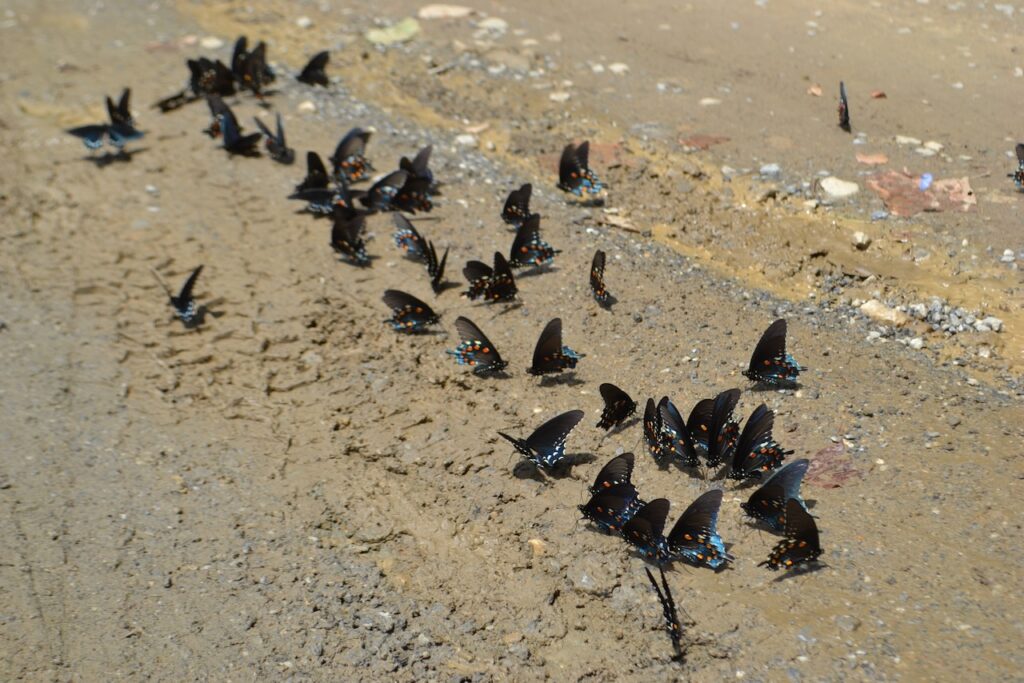
After Jim and Mike’s arrival and completing of our camp setup, we took a walk in the Valley, passing the Caldwell Fork trailhead where we planned to hike again the Boogerman Trail. We were pleased to see the bridge over Cataloochee Creek, and we reminisced about our comical creek crossing 11 years ago. An article in Smokies Life had listed this trail as one of the less traveled ones, despite the renown of its old growth trees. With the challenging road access to Cataloochee, we would avoid the crowds at the most used trails. Down in the Valley, we would see wild turkeys and a few elk. Returning to collect firewood after dinner, I observed a dozen elk and turkeys grazing in the fields.
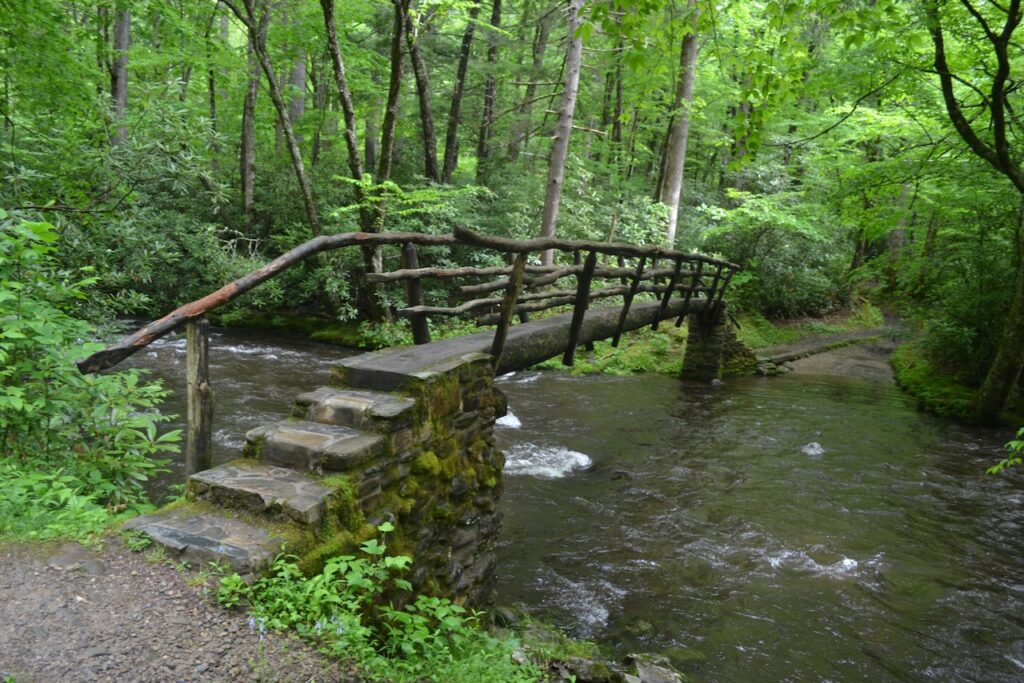
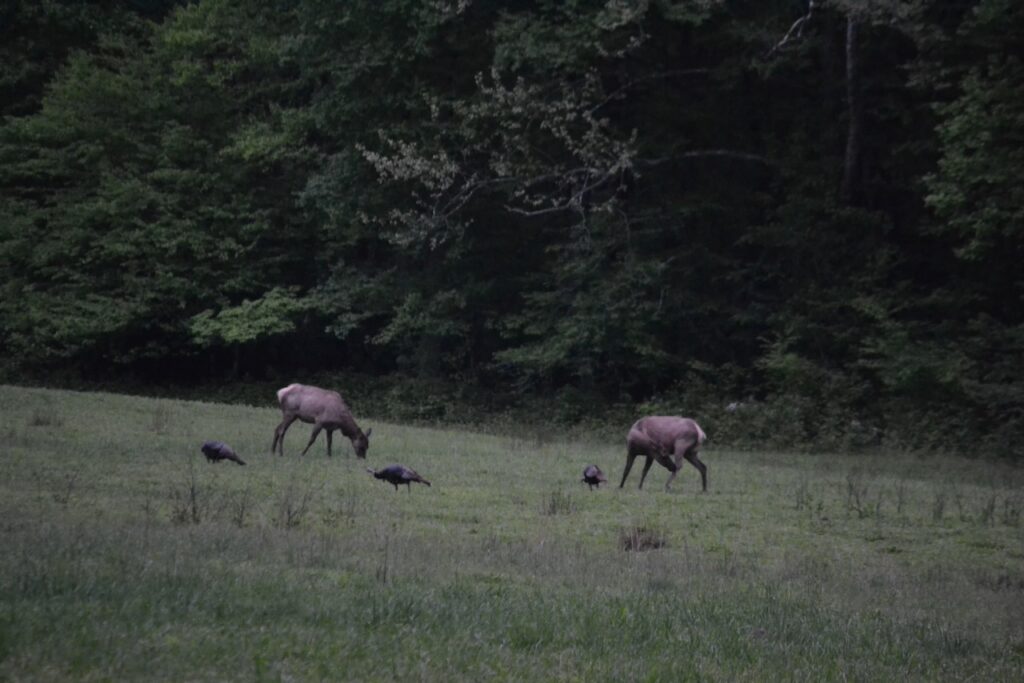
Our first day hike would be on the Little Cataloochee Trail. At the Pretty Hollow Trailhead, one other hiker was preparing his massive pack. He shared that he had a five day backpacking plan, taking him first up to Mount Sterling. Concerning rain, he invited it and the lushness that would come to the forest, ferns, and mosses. On the trail we passed the horse camp, and chatted briefly with three campers who had a fire going and breakfast. The backpacker with the massive pack towering above his head glided by us before the junction for the Little Cataloochee Trail. It was clearly a horse trail judging by the trodden mud and horse poop. We clearly had missed the ephemerals’ bloom in the previous month, though occasionally spotted a flowering mountain laurel.
Up the trail we encountered a park service employee coming down on horseback and tethered to a mule towing a log. Further up the trail, we would learn from his co-worker about their trail improvement work. They were felling black locust (a most durable wood), and along with stone were building “turnpikes” for trail improvement. We had previously passed some of their fine work. The three horse campers came riding up the trail, and they mentioned seeing the solo backpacker with his sixty-pound pack trucking along.
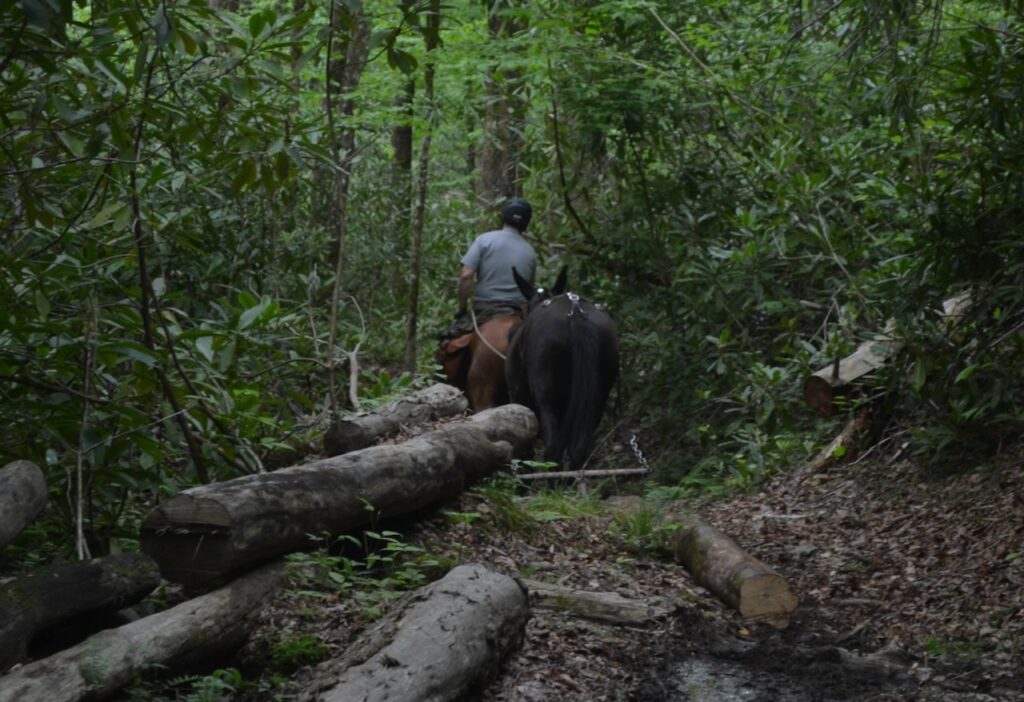
Highlights of this trail would be a number of historic structures. The Dan Cook place and his beautiful log cabin, showing off his skill as carpenter and cabinet maker, the dovetailed notching of the logs on the corners especially noteworthy. Across the trail, the remains of his stone apple house. Field stone walls in the forest marking the sites of former crop fields and pastures. The Little Cataloochee Baptist Church, built on a small hill, immaculate inside and out, with a large graveyard behind it. Past Little Cataloochee Creek, the John Jackson Hannah cabin.
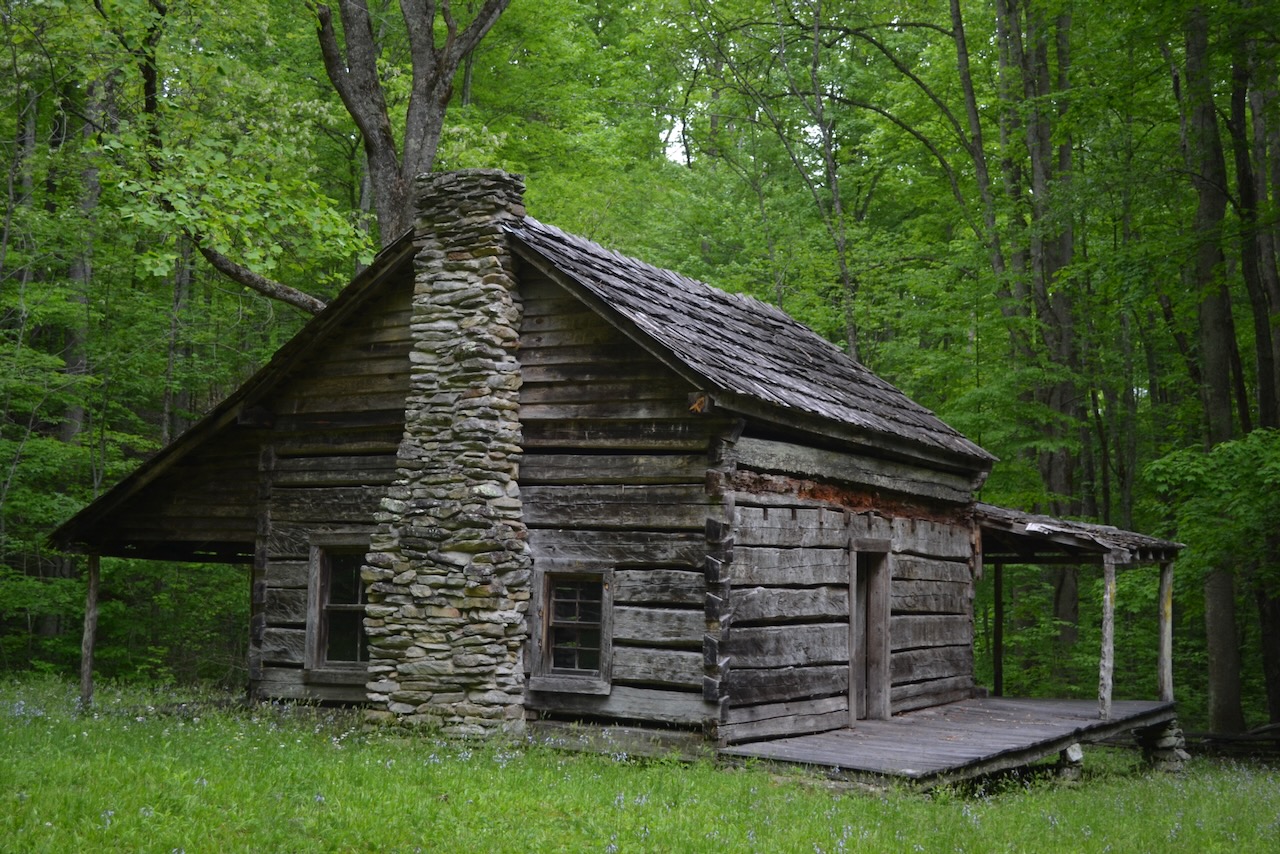
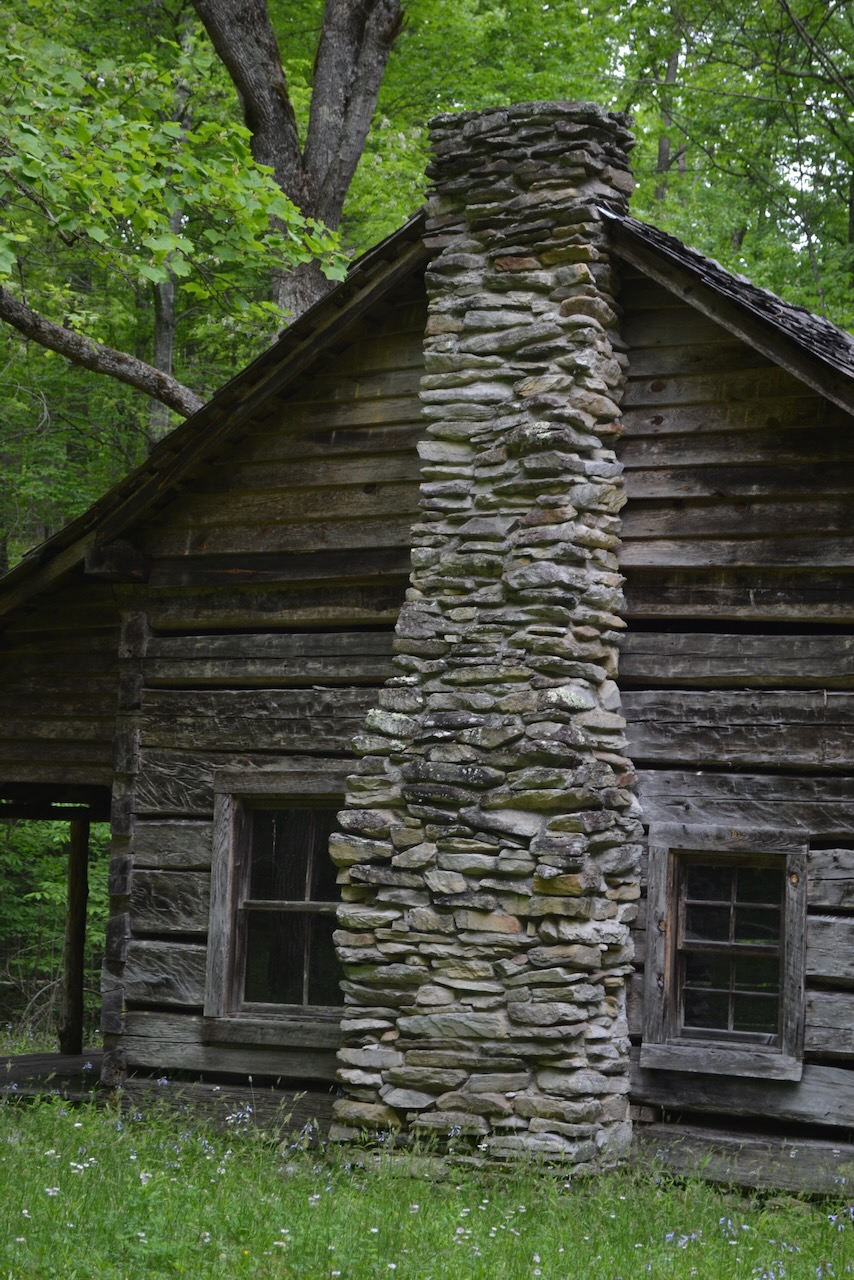
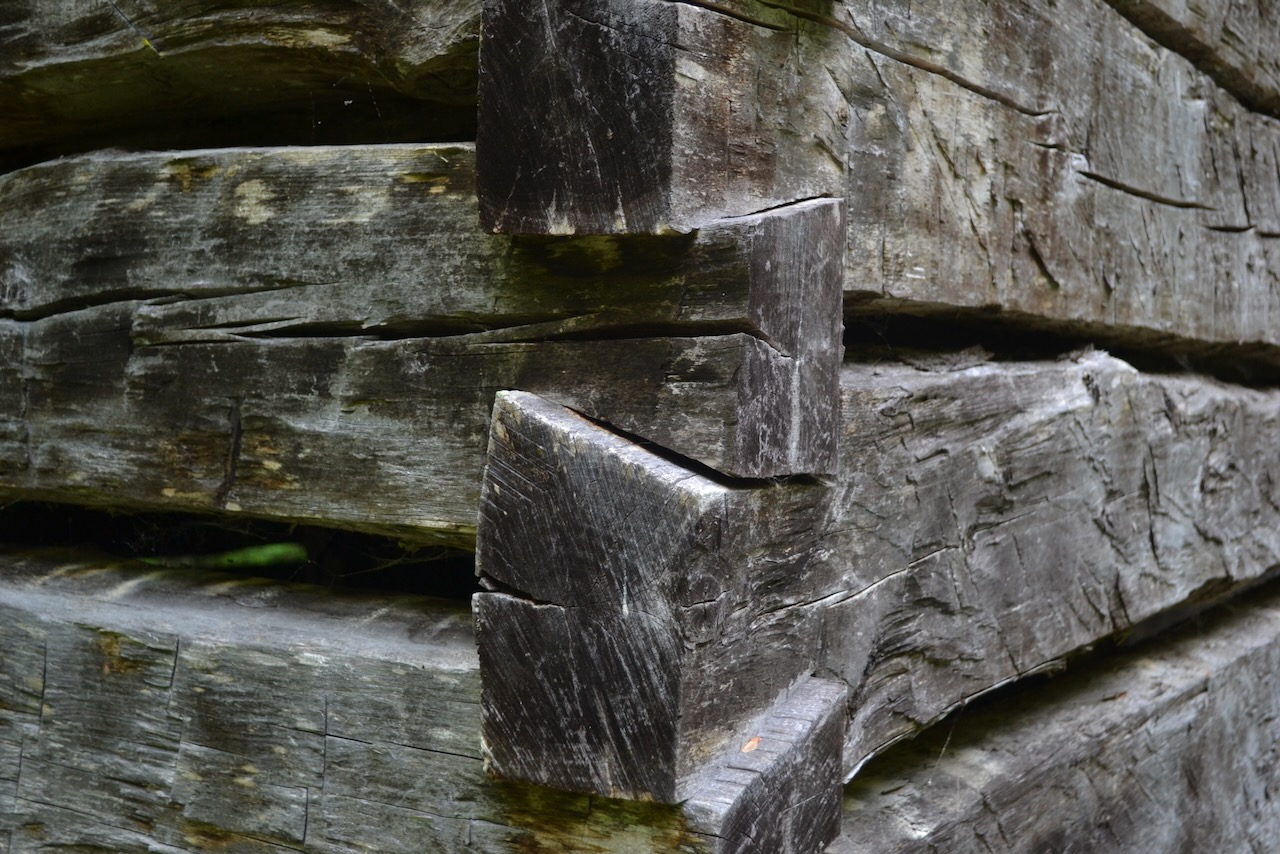

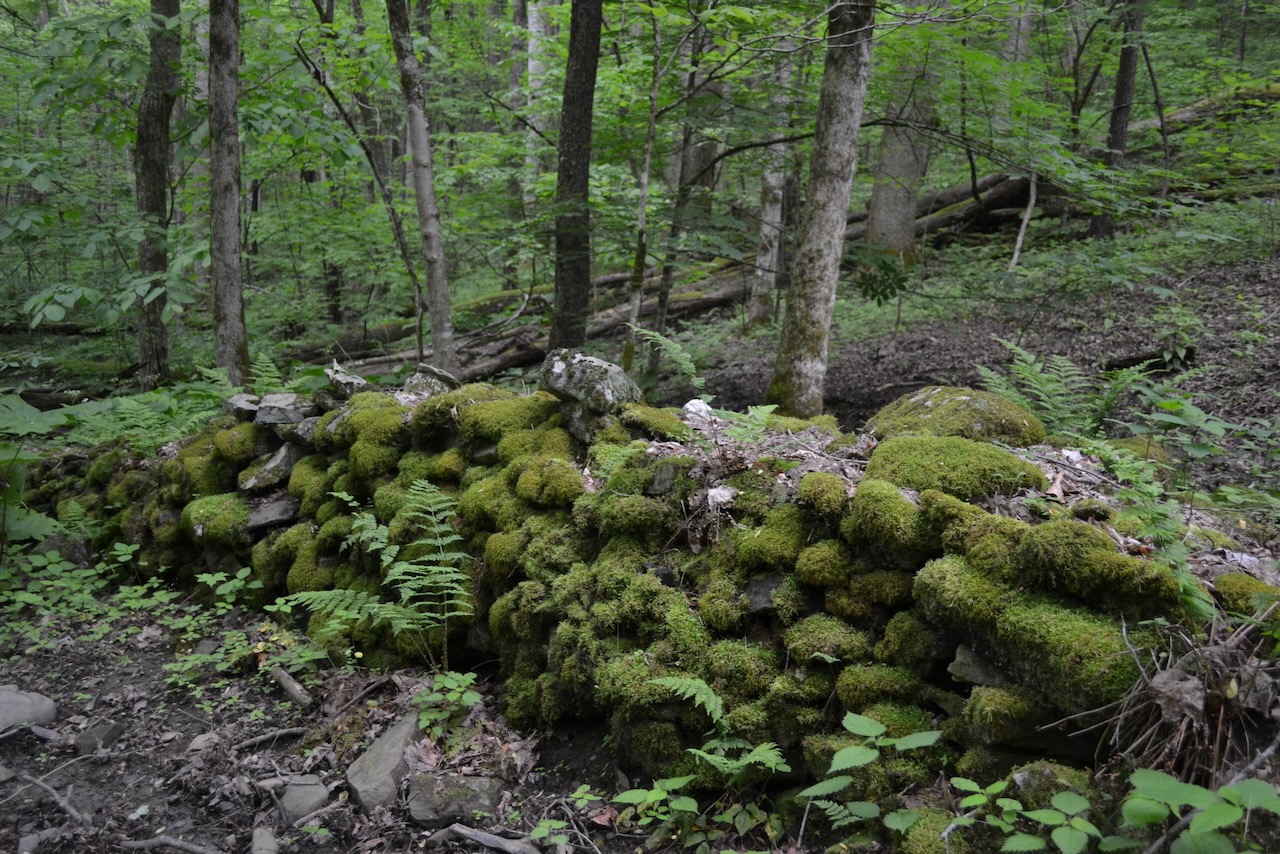
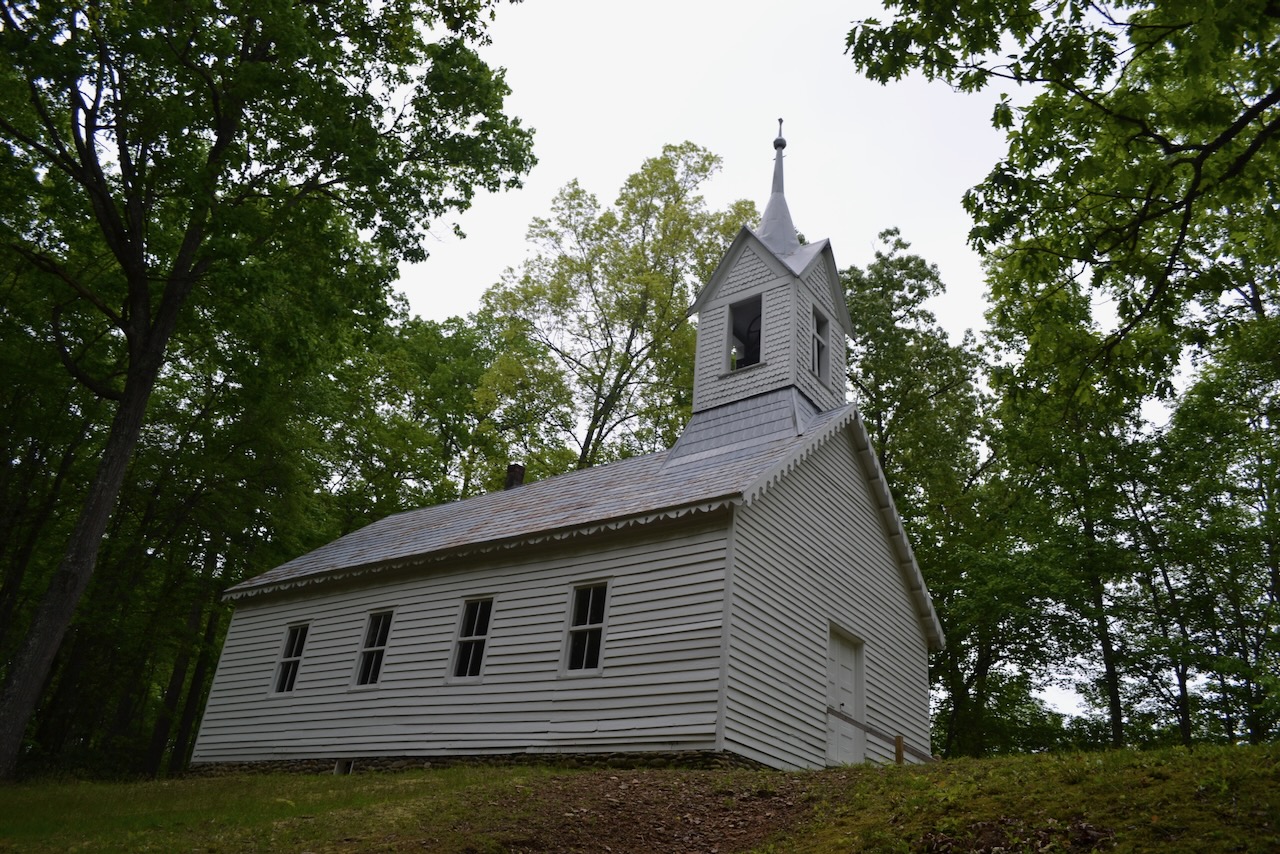
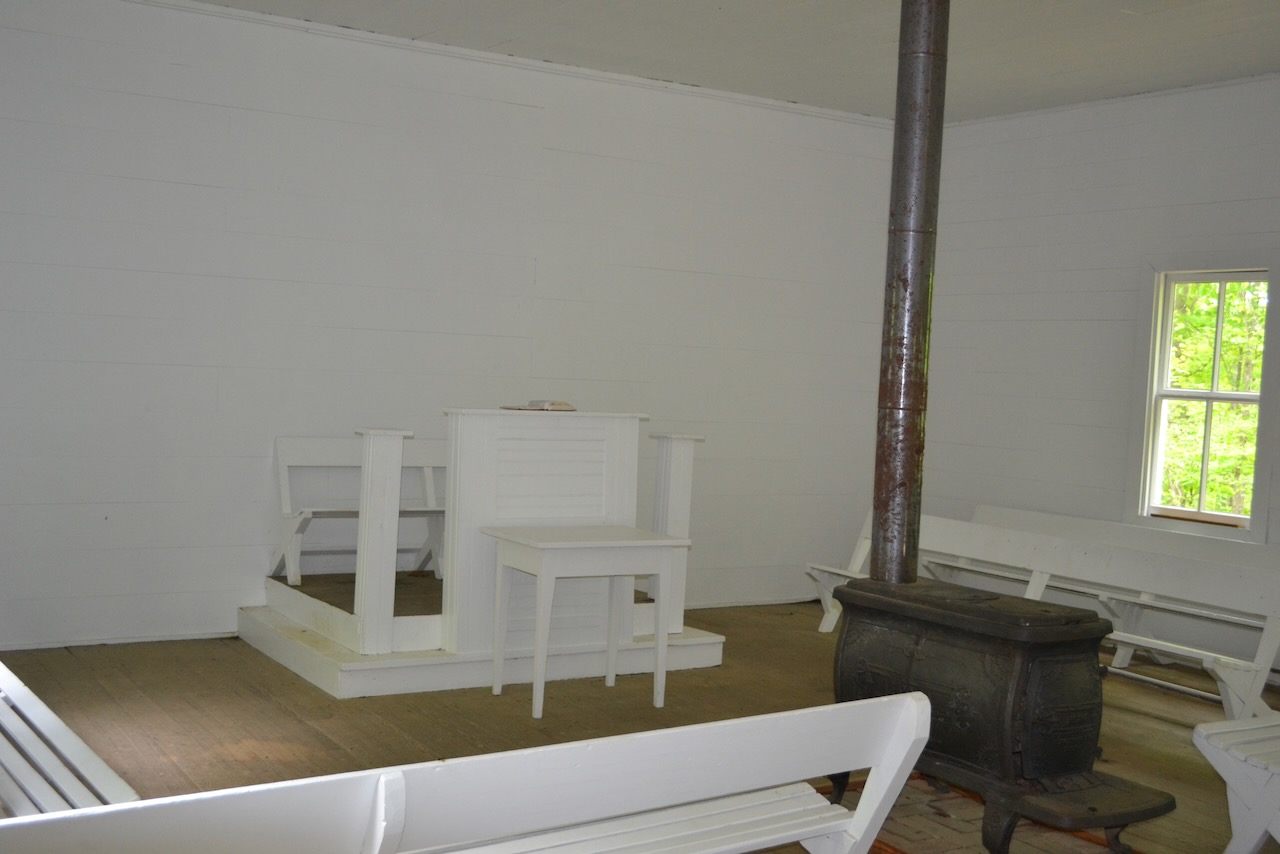
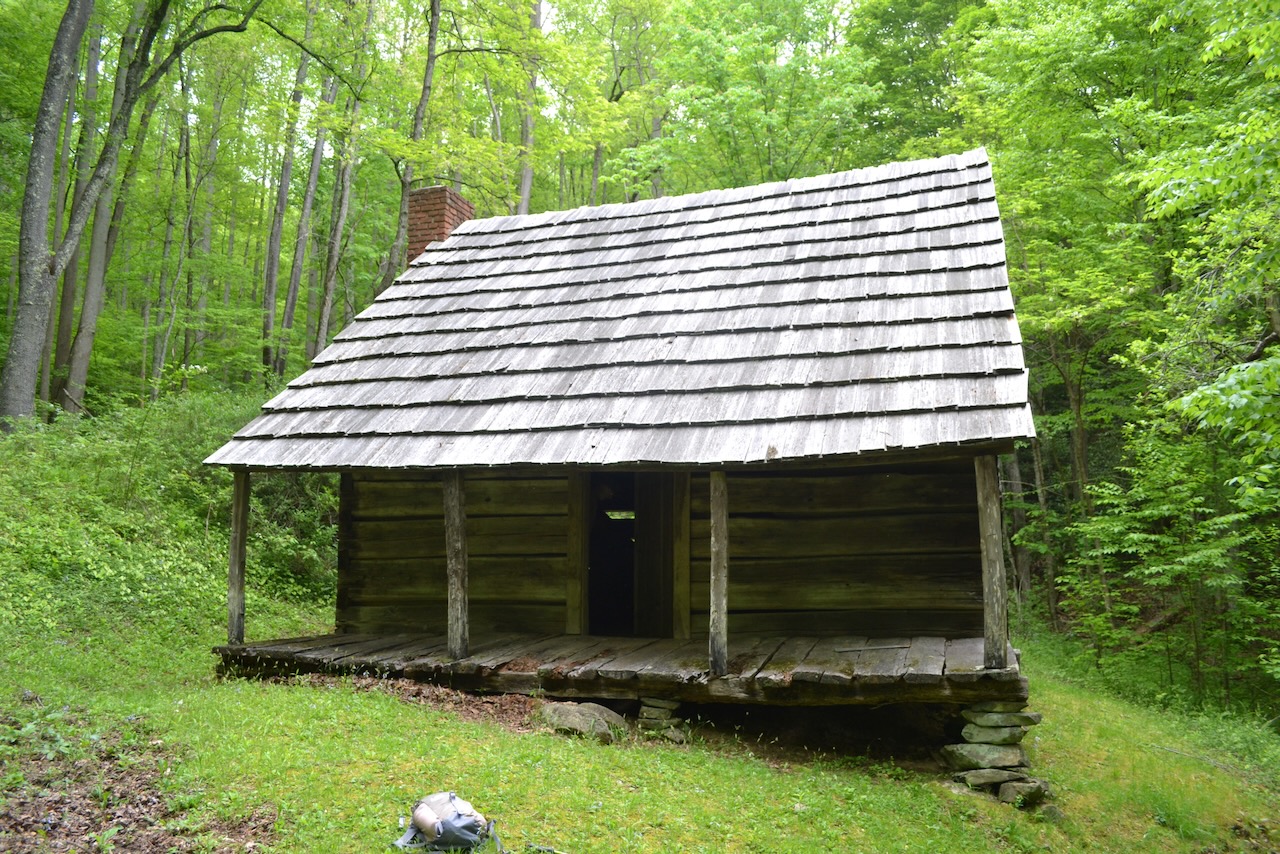
Retracing our steps on the return walk as rain came down, we had further interactions with the two Park Service employees. Their work day was winding down, and their horse and mule had already returned to the stables. We talked about various trails, and asked about the warnings concerning stream crossings on the Caldwell Fork Trail. They reported that with higher water after rains, hikers at one crossing would find the water level up to their thighs. We saw the results of their labor in stacks of locust logs down the trail.
At the horse camp on the last section of our return hike, we came upon the three horse riders. When Jim mentioned we had all gone to UNC together, the elder of their group grinned and said “We all went to prison together.” The banter continued, until one of them reached in a cooler and offered us a swig of moonshine. Jim took it for the team, and accounted himself well. Their dinner would be wild turkey, which the elder “had shot outside of his back door at home.” At our campsite, we had some breaks in the rain, which would come down solidly throughout the night.
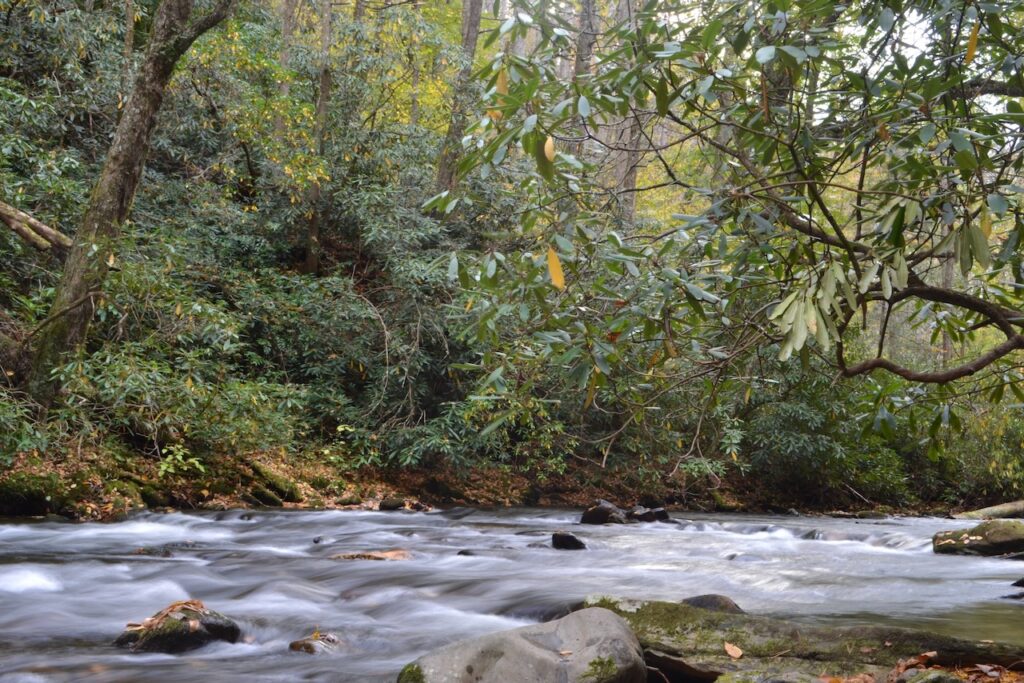
We had agreed on two remaining hikes – the Mount Sterling Trail, and the Boogerman Trail. We changed the order, and headed out in the morning for the Boogerman. With the information we had concerning the Caldwell Fork Trail and the anticipated water levels, we planned to do an out-and-back on the Boogerman. We enjoyed the walk across the bridge crossing Cataloochee Creek and up along Caldwell Fork before our trail branched off to the east. The rain had the forest floor verdant with a range of greens, this section of the forest spared major logging with remnant giant trees.
The spotting of a red salamander stopped us in the middle of the trail, a reminder that we were in the salamander capital of the world. This stop preceded a short walk to a most familiar tree, a massive tulip poplar. One of the Park Service employees had mentioned that we could find on its backside an opening exposing a view up the hollowed tree to light toward the tree’s top. Though this tree represented just one individual in this rich and diverse forest, it was worth visiting it for our third time.
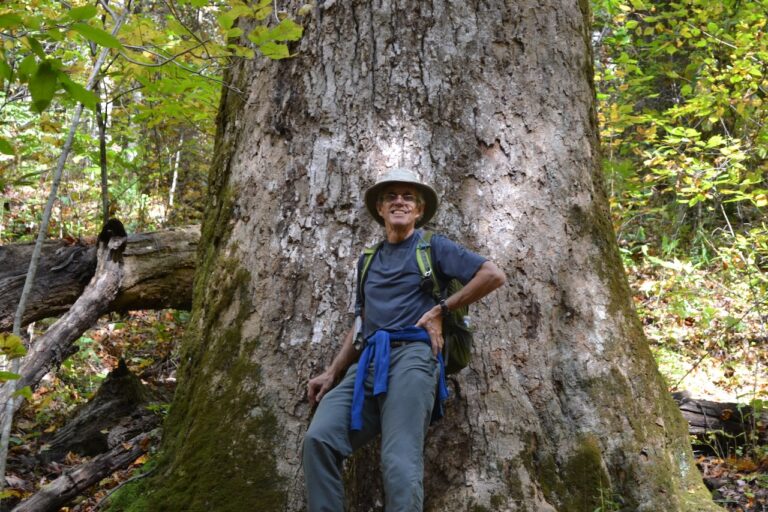
We continued our plan to turn around at the junction with the Caldwell Fork Trail. I opted to shorten my walk, and turn around before that place. They hiked on as I retraced my steps. Often on an out-and-back hike, the return can appear as all new, and that was the case as a light rain slowly increased. I would wait to reach camp before lunch.
Back at the campsite, I took shelter as the rain became a deluge, and was happy to be under shelter. As time passed, I wondered about my friends’ absence, and when I might need to take some action. They finally returned close to two hours after my return, and I found out why. When they reached the trail junction, they chose to take the shorter and flatter path, and deal with the stream crossings. There were seven, and the deepest one came up to Jim’s waist.
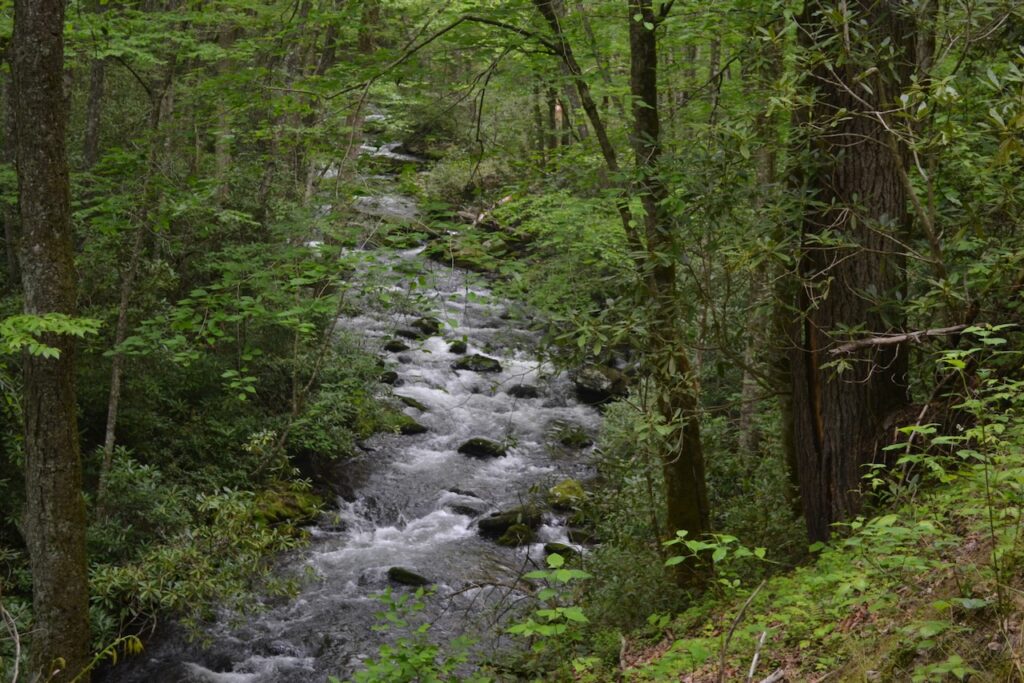
After another night of rain, we prepared to head up Mount Sterling, another trail we walked in October of 2014. I anticipated the high elevation red spruce and Fraser fir forest. It was a quite long mountain gravel road drive to the trailhead. We would have 1900 feet of elevation gain on our hike to the top, but the trail had a fine grade. We were passed on the trail by the Park Service employees we previously met who were carrying tools including chainsaw and ax to remove downed trees that were blocking trails ahead. We had missed the ephemeral bloom on our other trails, but not here, finally coming into trillium-covered mountainsides. The rocky trailsides were covered with mosses saturated with the rains, and stands of ferns prodded up everywhere.
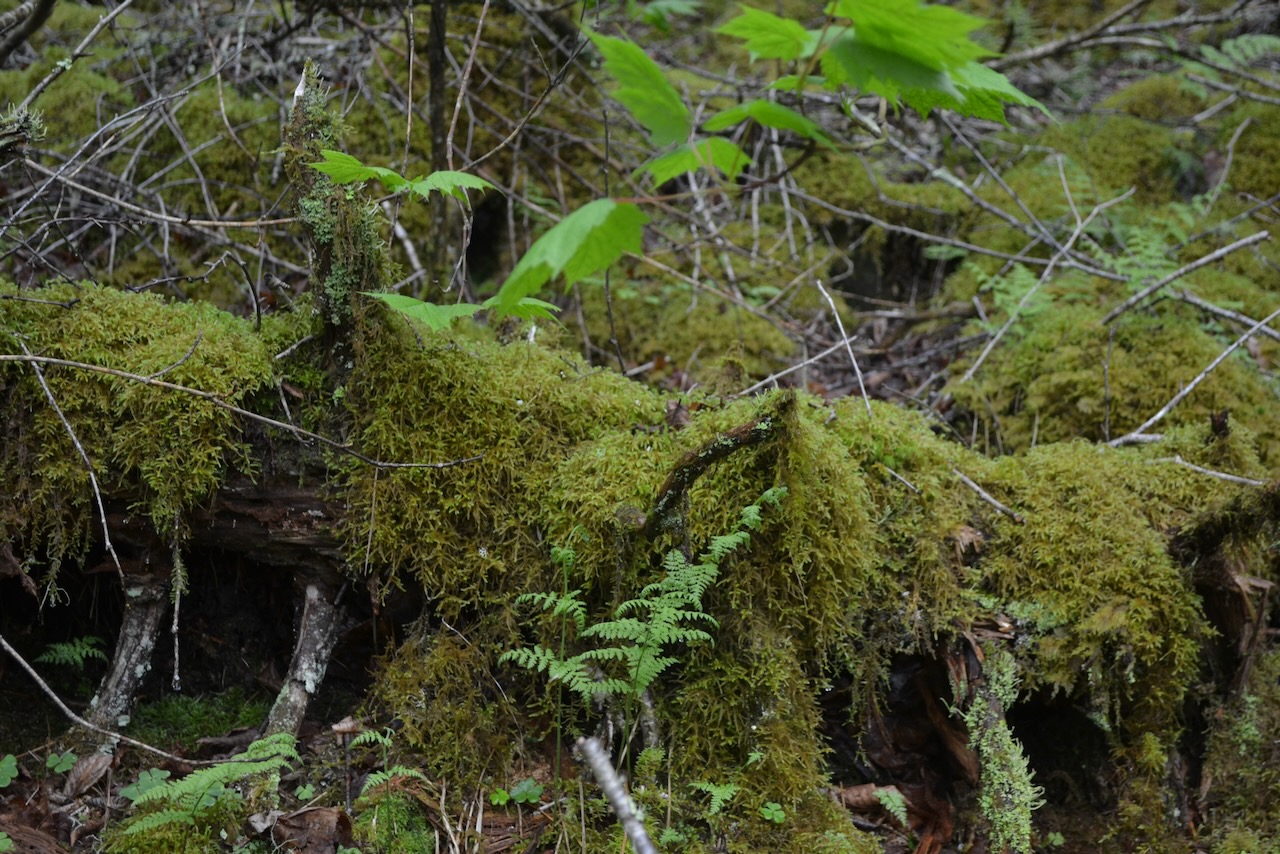
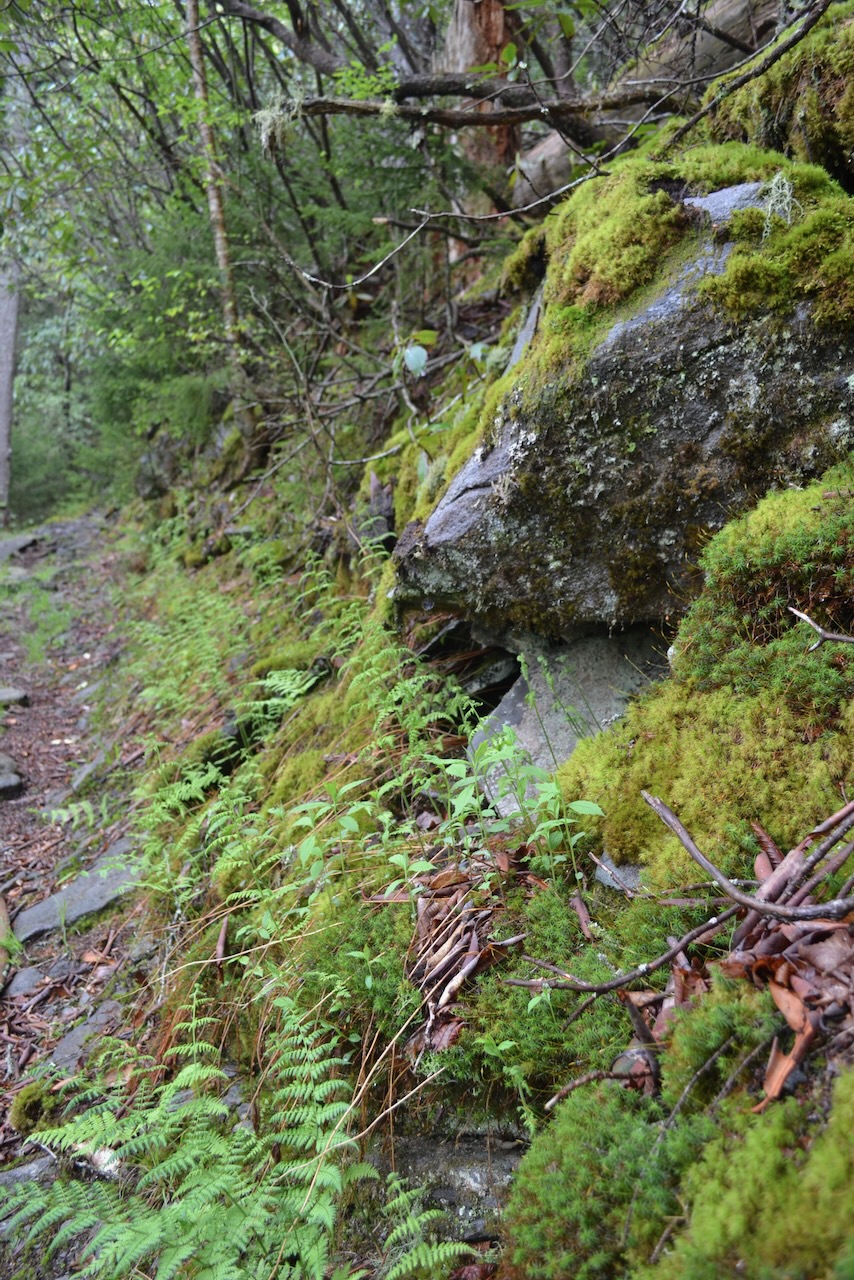
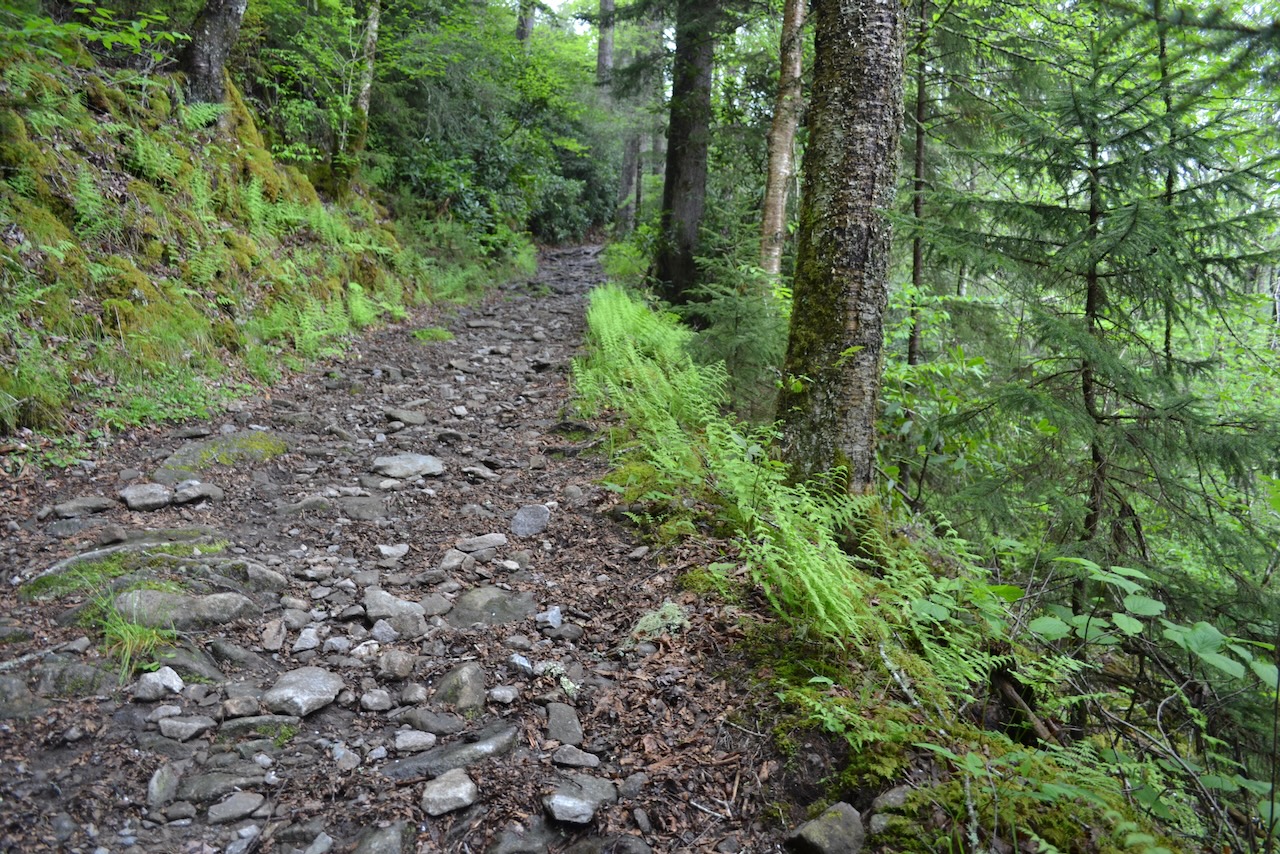
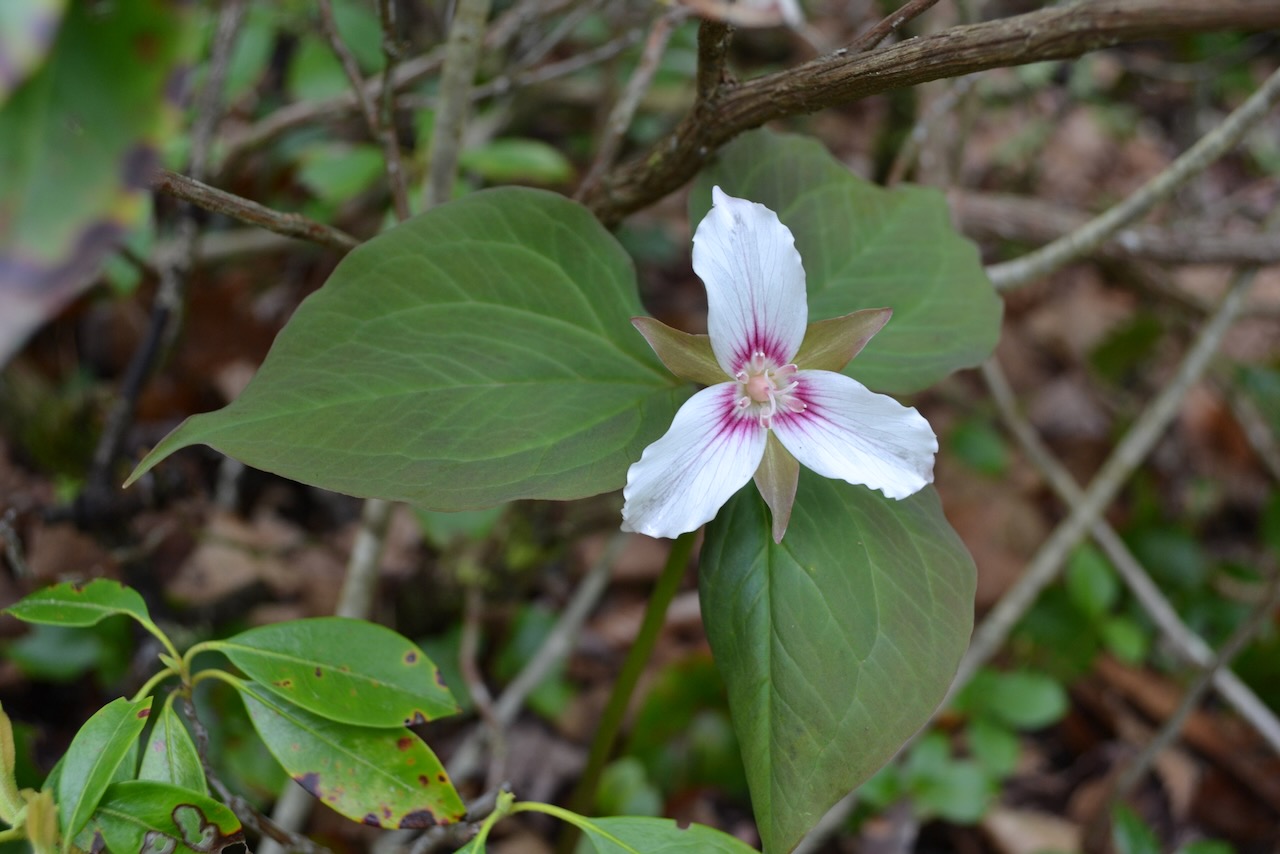
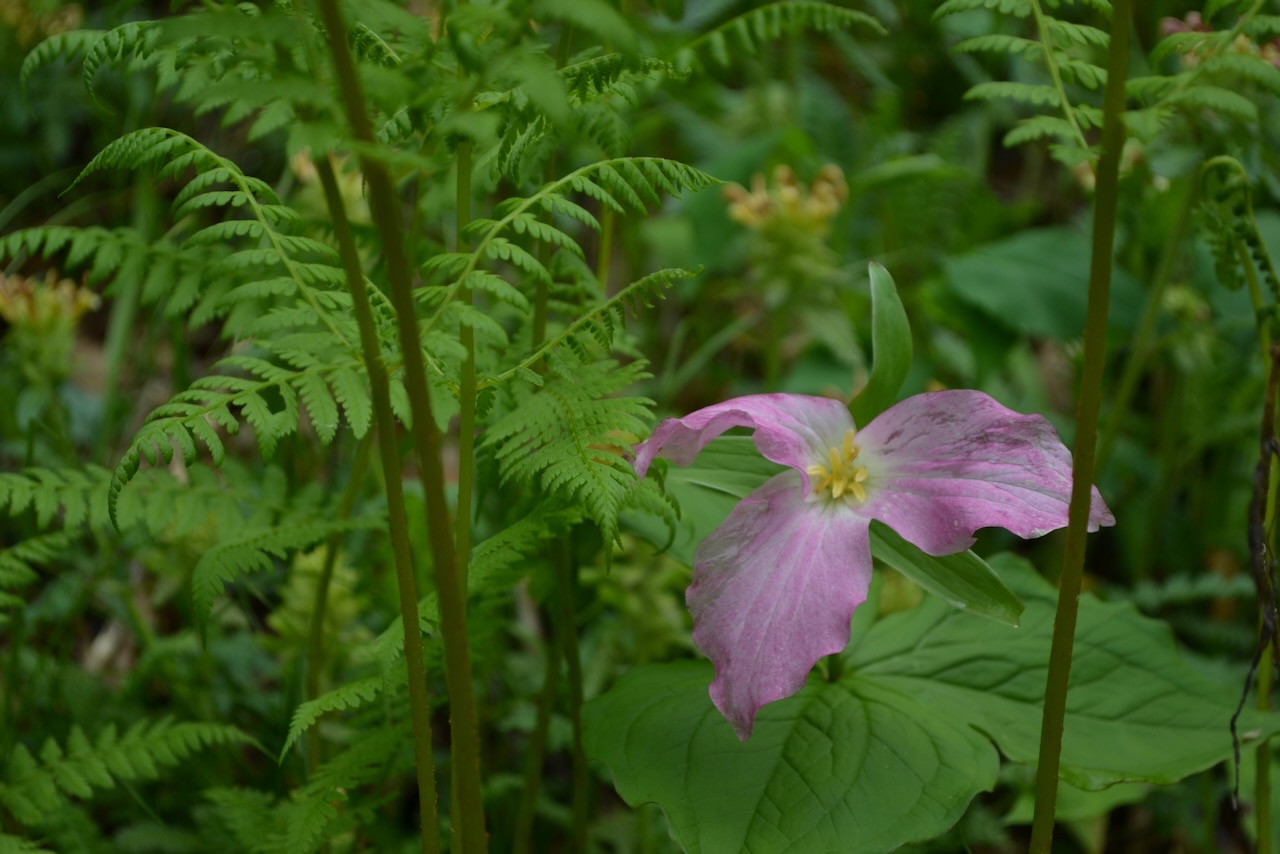
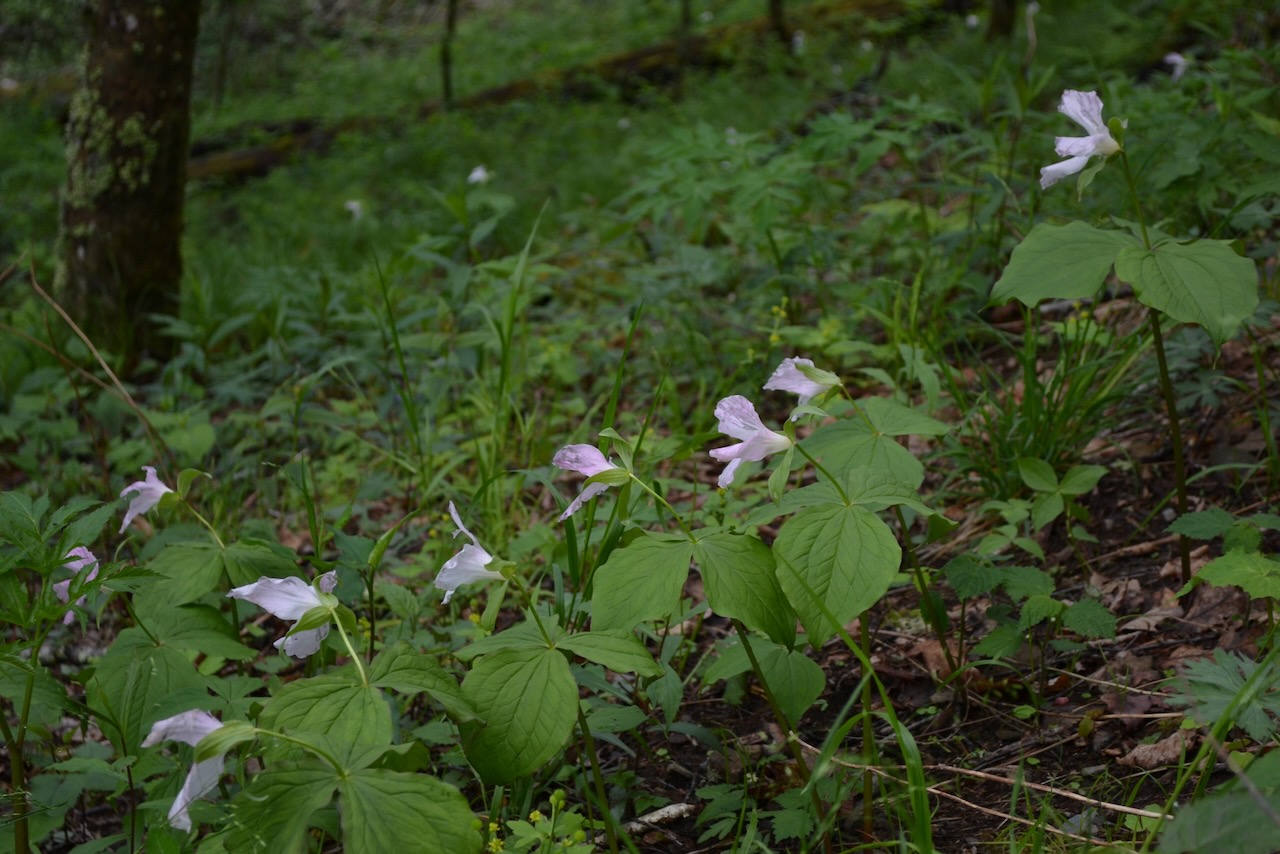
At the Mount Sterling Gap, a junction of several trails, we chatted with two backpackers from Houston on a multi-day trip. They told us about staying the previous night at Tricorner Shelter, and sharing it with a few young people, and a “character” with a huge pack. We knew that “character”, and they went on to describe his avid pursuit – dancing, and his outgoing demonstration to the beat of the young people’s music. The chat was another memorable meeting up with others on the trail, and sharing of stories.
We were fully in the spruces and firs, and enjoyed that “enchanted forest” on our way to the summit. This high elevation forest had the shade and ambience of the forests of Mount Lecount and Clingman’s Dome. When last here in October of 2014, there was hoar ice, and icicles on the summit tower, built in 1933. On the last stretch before the top, stands of tiny trees created a miniature forest. We had lunch at a backcountry campsite by the summit. Clouds were moving in as Mike and I climbed the tower. Several views were occluded by the clouds, but one opening appeared to the north.
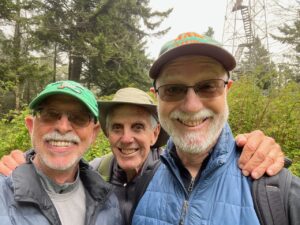
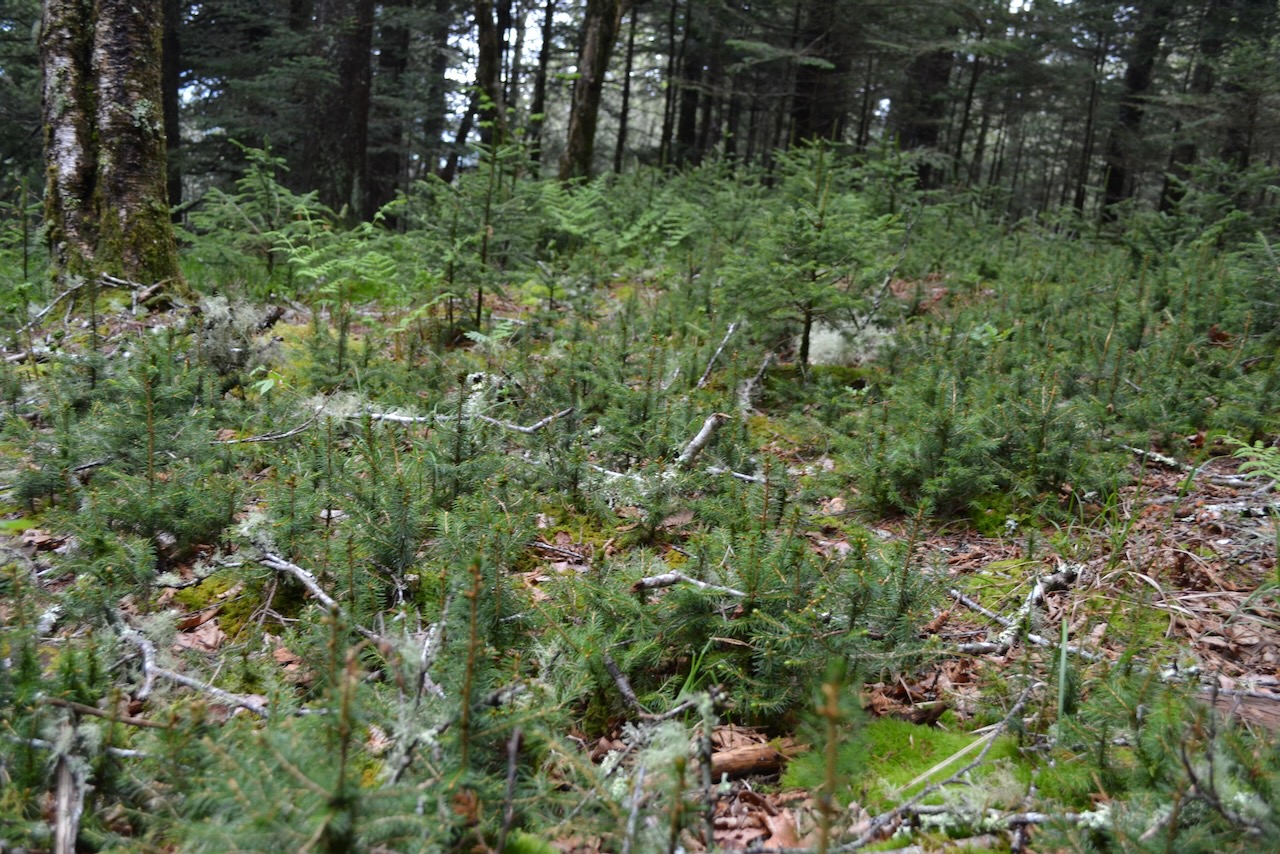

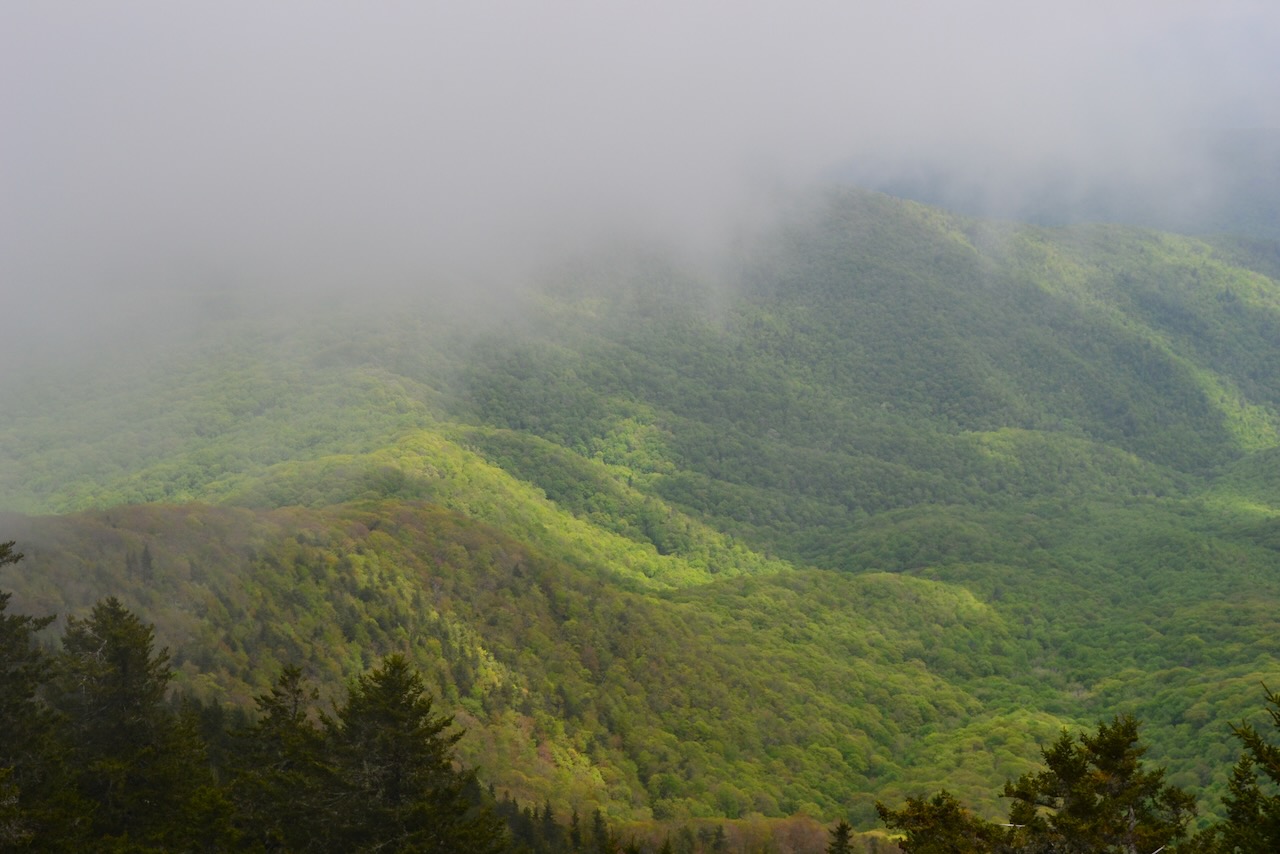
After our return hike and drive down the mountain, we found our campsite bathed in afternoon sunlight. Our site’s location on Cataloochee Creek allowed for a short descent to refresh in the cool waters. As we sat in the sun, black and tiger swallowtails flitted around, occasionally lighting on a leaf to also soak up the sun. The afternoon sun and atmospheric clarity was in sharp contrast to previous days.
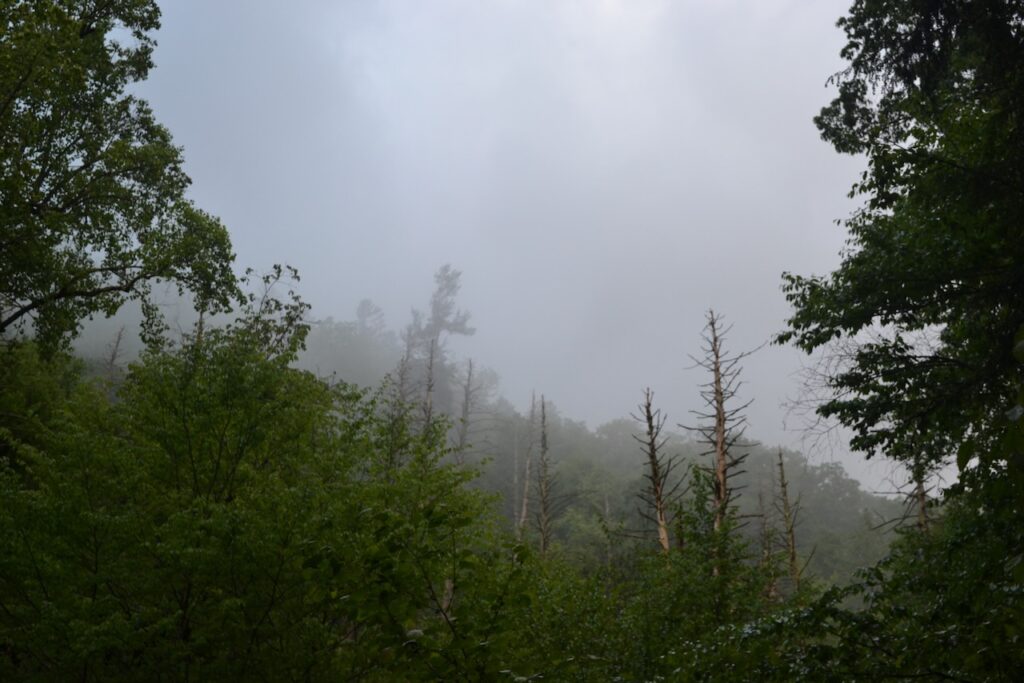
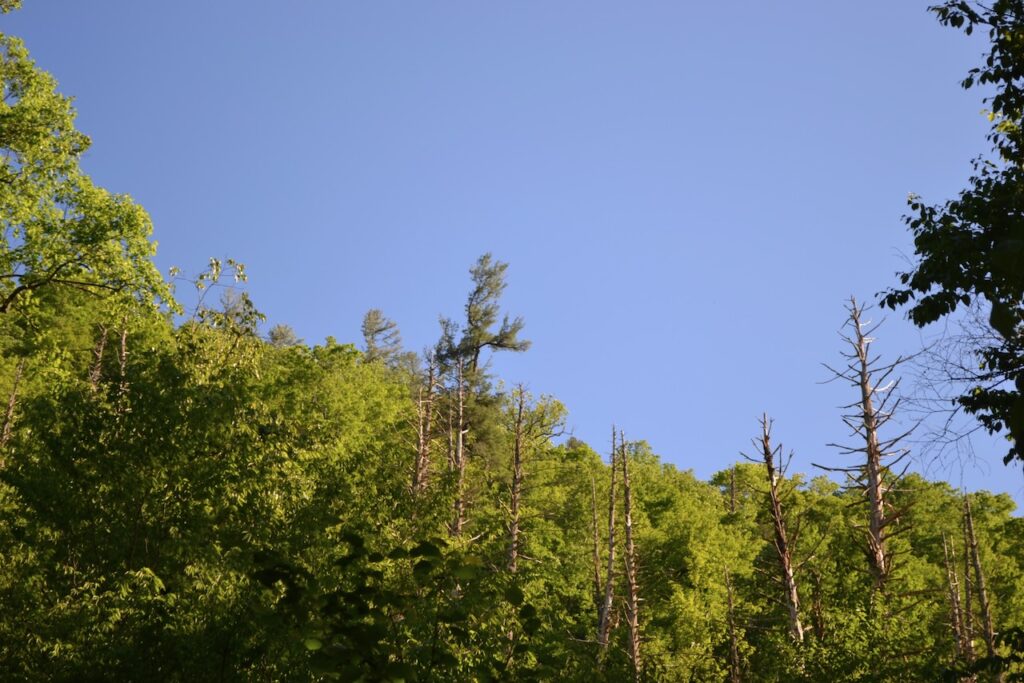
We soaked up the waters’ sounds that afternoon and through the night. As we broke camp in the morning, the creek’s sound was overwhelmed by the crack and crash of a falling tree on the other side of the water, recalling our 2022 Smokies trip and tree fall in the middle of the night. All in all, this campsite on Cataloochee Creek was in our minds the best frontcountry camp yet.
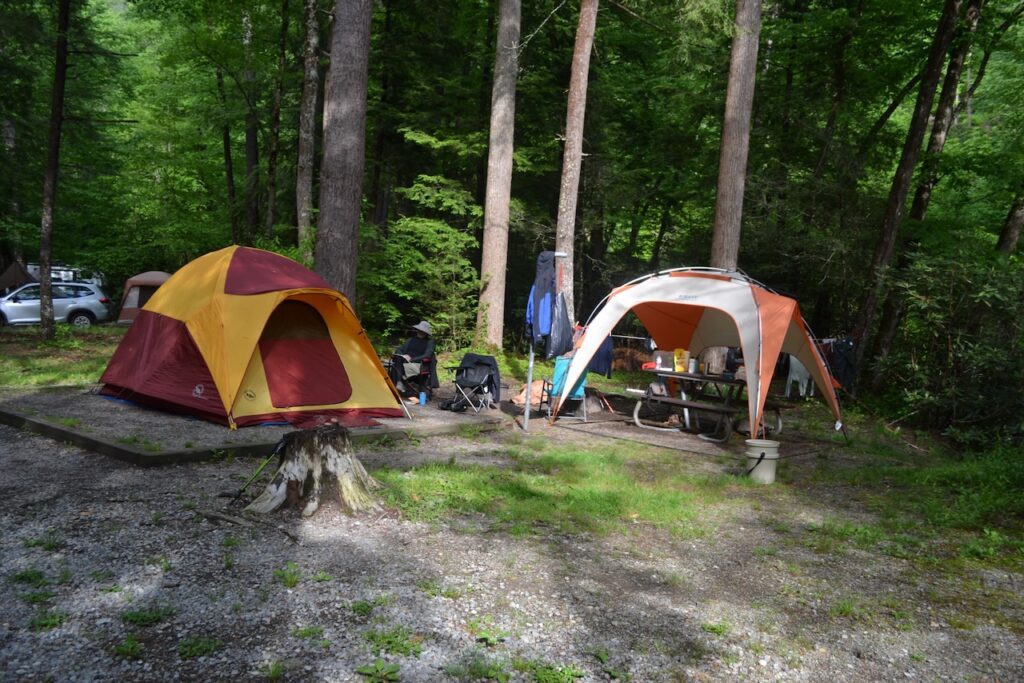
I love imagining this time you had in the woods with your long time friends. I can almost smell the wet leaves. Thank you, Bob, as always, for sharing.
Thanks Sarah
What a wonderful reunion adventure! Loved the picture of Sully and all the other pictures and stories!
When I asked the other day Sully has grown to 5’4″. If his Mom had known about that entrance road…
A 5 star visit with friends in a 5 star venue 🙂
Good summation